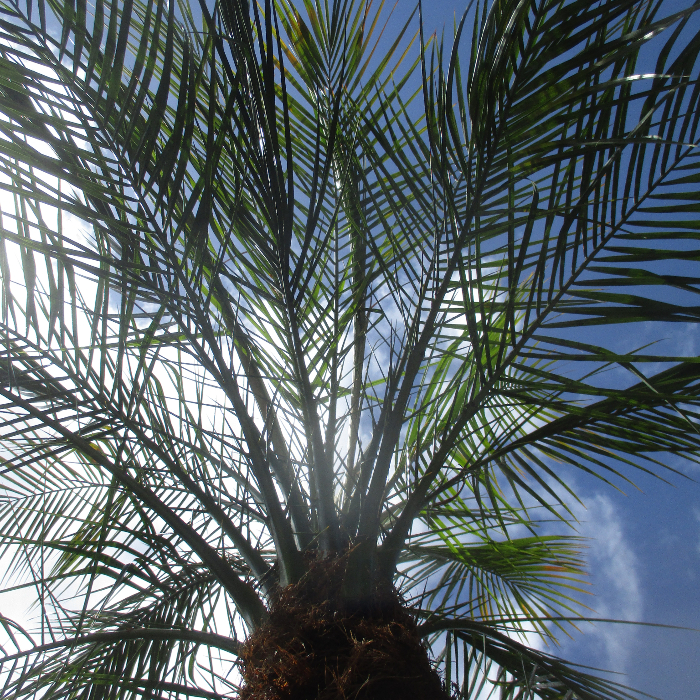UNITED STATES—Palms seem to exemplify the culture of California. However, only the California fan palm, which is also the desert fan palm, is native. All others are exotic. With its dwarf palmetto, Oklahoma has as many native palms as California. Furthermore, the California fan palm is only endemic within remote riparian ecosystems of the Colorado and Mojave Deserts.
Common date palm was likely the first of the many exotic palms in California. Spanish Missionaries imported them for date production during the Eighteenth Century. Although initially utilitarian rather than decorative, recycled trees from displaced orchards became popular for larger landscapes. Potentially messy fruit is minimal without male pollinators.
Long before urbanization displaced date orchards, many other palms came to California merely because of their visual appeal. Some are large enough to be shade trees. Others can provide shade in groups. Many develop elegant trunks or sculptural form. Some stay relatively low or shrubby. All innately provide famously and luxuriantly evergreen foliage.
Palm trees are unlike any other type of tree.
Palms are most certainly appealing within appropriate situations. They are very different from other trees though. Like arborescent yuccas and cordylines, palms are ‘herbaceous trees’. Unlike yuccas and cordylines, and with very few exceptions, palms do not branch. Nor do their trunks continue to expand in width as they continue to grow in height above.
Palms consequently spend their first few years widening their bases at ground level. Big palms, such as Canary Island date palm, likely require many years. Once their bases are adequate, developing palms ‘launch’ into vertical growth. Although palms do not branch, a few, such as Mediterranean fan palm, develop multiple trunks from their primary bases.
Once palms launch, they grow only upward. They lean only to avoid shade, or if pushed by wind. It is impossible to direct their bulky but singular terminal buds around obstacles, such as utility cables. It is also impossible to contain their shade as they get high enough to shade adjacent areas instead. Many palms are spiny, so are difficult to prune properly, even while young and within reach.
Highlight: Pygmy Date Palm
Canary Island date palm is the largest local palm. Pygmy date palm, Phoenix roebelenii, although a species of the same genus, is one of the more diminutive palm trees. It might take many years to grow 10 feet tall and may never get twice as tall. Its pinnately compound leaves are only about two to four feet long. Thin leaflets are about 5 to 10 inches long.
Such compact stature is a distinct advantage for some situations. With sufficient sunlight, pygmy date palm is a delightful houseplant. It is also appealing within atriums and cozily compact gardens. For those who appreciate the aesthetics but not the large size of most palm trees, pygmy date palm is a practical option. It actually resembles a common date palm.
Like all date palms, a pygmy date palm surrounds its single terminal bud with nasty long spines, which are specialized proximal leaflets. These spines are painful to interact with while grooming and pruning deteriorated old leaves and floral trusses back to their trunk. Unlike most other palm trees, mature pygmy date palms are not very conducive to relocation.
Horticulturist Tony Tomeo can be contacted at tonytomeo.com.






